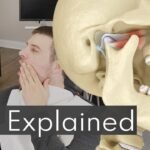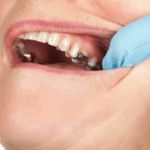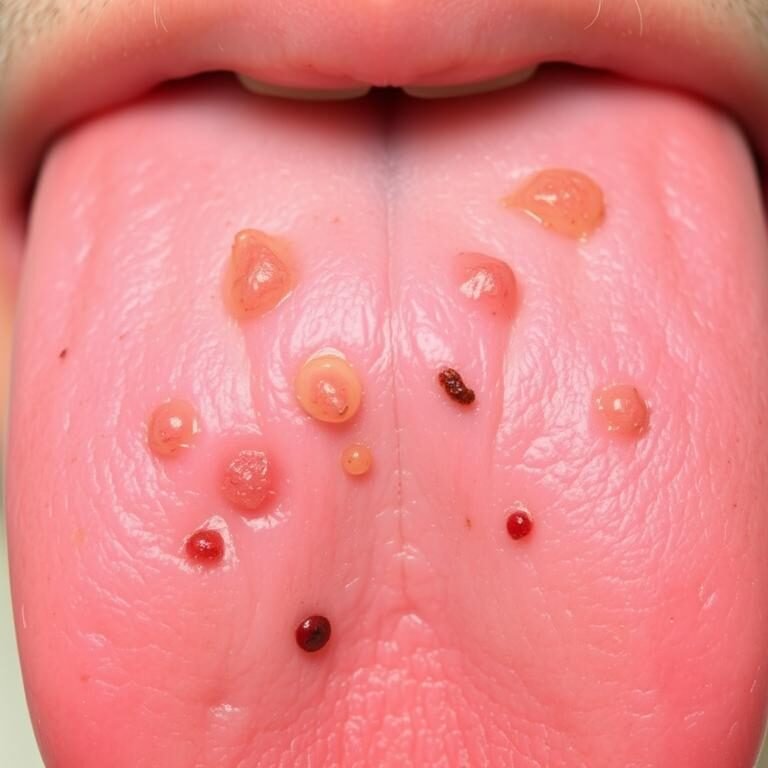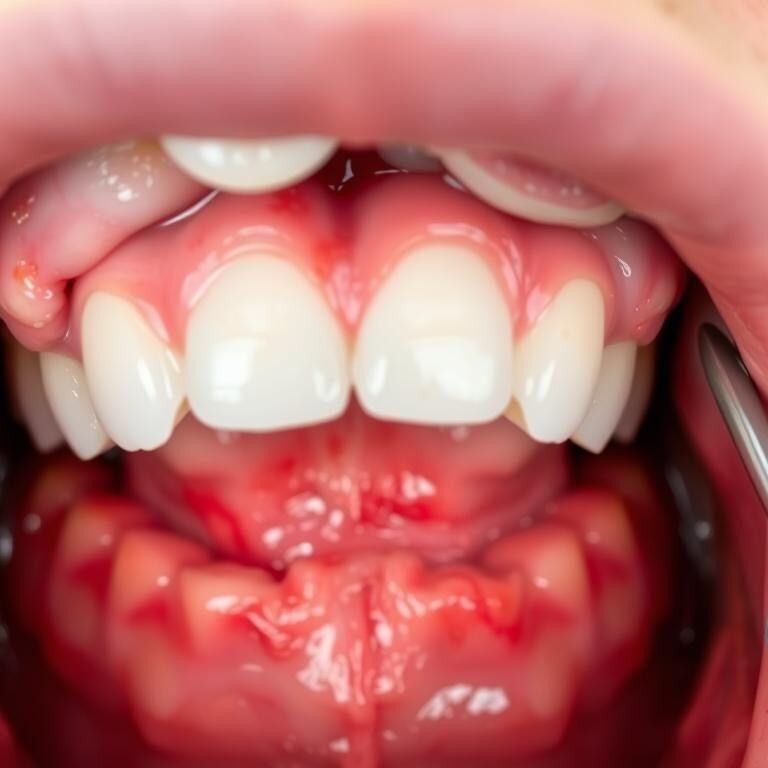Table of Contents
What is TMJ?
Temporomandibular joint disorder (TMJ) is a condition that affects the jaw joint and surrounding muscles. The temporomandibular joint, also referred to as the TMJ, is the hinge joint that connects the jawbone to the skull. It allows for smooth movement of the jaw, enabling us to speak, chew, and yawn. However, when the joint becomes dysfunctional, it can lead to a variety of painful symptoms and impact daily life.
TMJ disorder can arise due to various factors, such as jaw injuries, arthritis, teeth grinding or clenching, misalignment of the jaw or teeth, stress, or even hormonal changes. The exact cause can sometimes be difficult to determine, but it is crucial to identify the underlying factors to develop an effective treatment plan. TMJ disorder is not uncommon and can affect people of all ages, although it is more prevalent in women than men.

Causes of TMJ
TMJ, or temporomandibular joint disorder, is a common condition that affects the jaw joint and surrounding muscles. While the exact cause of TMJ is often unclear, there are several factors that can contribute to its development. One of the primary causes of TMJ is a misalignment of the jaw joint, which can occur due to trauma or injury to the jaw, excessive teeth grinding or clenching, or even habits like nail biting or chewing gum. This misalignment can put added stress on the joint, leading to inflammation, pain, and discomfort.
Another potential cause of TMJ is muscle tension or spasm in the jaw and facial muscles. This can be the result of stress, anxiety, or an abnormal bite that puts strain on the muscles. Additionally, certain medical conditions like arthritis or autoimmune disorders can increase the risk of developing TMJ. It’s important to note that each individual’s experience with TMJ may vary, and a combination of these factors or other unique factors may contribute to the development of the disorder. Understanding the causes of TMJ is crucial in order to accurately diagnose and effectively treat the condition.
Symptoms of TMJ
Temporomandibular joint (TMJ) disorder can cause a range of symptoms, which can vary from person to person. One of the most commonly reported symptoms of TMJ is jaw pain or tenderness. This pain may occur on one or both sides of the face and can sometimes radiate to the neck and shoulders. Patients with TMJ may also experience difficulty or discomfort while chewing or opening their mouths wide. This can make it challenging to eat certain foods or even speak clearly.
Additionally, some individuals may notice clicking or popping sounds when they open or close their mouths, as well as a sensation of their jaw locking or getting stuck in a certain position. These symptoms can be disruptive and affect quality of life, leading individuals to seek diagnosis and treatment for TMJ.
In addition to jaw pain and difficulty with jaw movement, TMJ disorder can also cause other symptoms that may vary among individuals. Some people may experience headaches, including tension headaches or migraines, which may be triggered by the jaw misalignment associated with TMJ. Ear pain or a feeling of fullness in the ears can also be present, along with tinnitus (ringing in the ears) or dizziness.
Facial swelling or a tired feeling in the face muscles are other potential symptoms that can be associated with TMJ. It is important to note that while these symptoms can be indicative of TMJ, they can also be caused by other conditions, so a proper diagnosis from a healthcare professional is crucial for effective treatment.
| Symptom | Description |
|---|---|
| Jaw pain | Pain or tenderness in the jaw joint area, which may worsen with movement or chewing. |
| Difficulty chewing | Difficulty or discomfort while chewing, sometimes accompanied by clicking or popping sounds. |
| Jaw stiffness | Feeling of stiffness or limited movement in the jaw joint. |
| Ear pain | Pain in or around the ears, which may be mistaken for earaches. |
| Headaches | Recurrent headaches, often starting from the temples or around the jaw joint area. |
| Neck and shoulder pain | Pain or stiffness in the neck and shoulders, which may be related to TMJ issues. |
| Clicking or popping | Clicking, popping, or grating sounds when moving the jaw, particularly when chewing or opening the mouth wide. |
| Locking of the jaw | Occasional locking of the jaw joint, making it difficult to open or close the mouth fully. |
| Muscle tenderness | Tenderness or soreness in the muscles around the jaw joint. |
| Changes in bite alignment | Changes in the way the upper and lower teeth fit together, sometimes causing a misaligned bite. |
Diagnosing TMJ
Diagnosing TMJ involves a comprehensive evaluation of a patient’s symptoms, medical history, and a physical examination. Although there is no single diagnostic test for TMJ, the process typically begins with a consultation with a dentist or a healthcare professional specializing in oral health. During the consultation, the healthcare provider will conduct a thorough examination of the patient’s temporomandibular joint, jaw, and surrounding structures to identify any signs of dysfunction or abnormalities.
In addition to the physical examination, diagnostic imaging techniques such as X-rays, CT scans, or MRI scans may be recommended to provide a more detailed view of the temporomandibular joint and its surrounding tissues. These imaging tests can help rule out other conditions that may present with similar symptoms and provide valuable information about the alignment and integrity of the joint.
The diagnosis of TMJ is often confirmed based on the patient’s reported symptoms, clinical findings, and the exclusion of other potential causes. It is essential for healthcare professionals to take a comprehensive approach to diagnose TMJ accurately and develop an appropriate treatment plan tailored to each individual’s needs. Early diagnosis and intervention can lead to better outcomes and improved quality of life for those affected by TMJ syndrome.
Common misconceptions about TMJ
TMJ, or temporomandibular joint disorder, is a condition that affects the jaw joint and surrounding muscles. Despite its relatively common occurrence, there are often misconceptions about TMJ that can lead to confusion and misinformation. One common misconception is that TMJ only affects older individuals. In reality, TMJ can affect people of all ages, including children. In fact, studies have shown that TMJ can occur in up to 60% of children, with symptoms manifesting as early as age 3. It is important for individuals and parents to be aware of this possibility and seek appropriate care if symptoms arise.
Another misconception about TMJ relates to its cause. While it is true that jaw injuries can contribute to TMJ, there are various underlying factors that can lead to its development. These factors can include genetics, skeletal structure, hormonal changes, and even stress. Understanding these multifaceted causes can help patients recognize the potential triggers for their TMJ symptoms and seek appropriate treatment. It is crucial to address these misconceptions about TMJ to provide accurate information and promote awareness. By dispelling these myths, individuals can make informed decisions about their oral health and seek timely care if needed.
| Misconception | Correction |
|---|---|
| TMJ only affects the jaw | TMJ can cause pain in the jaw, face, head, and neck |
| TMJ is always caused by teeth grinding | TMJ can result from various factors including stress |
| TMJ is a permanent condition | TMJ symptoms can be managed and treated |
| TMJ only affects older adults | TMJ can affect individuals of any age |
| TMJ always requires surgery | Many cases of TMJ can be managed without surgery |
How TMJ affects daily life
TMJ, or temporomandibular joint disorder, can have a significant impact on daily life. The temporomandibular joint connects the jawbone to the skull, allowing for the movements necessary for speaking, chewing, and yawning. When this joint is affected by TMJ, individuals may experience a range of symptoms that can affect their quality of life.
One way TMJ can impact daily life is through pain and discomfort. TMJ can cause jaw pain, facial pain, headaches, and earaches, making it difficult to eat, speak, and even sleep. This can lead to decreased productivity, difficulty concentrating, and overall decreased quality of life. Additionally, TMJ can also cause limited jaw movement, making it difficult to open the mouth fully or chew food properly. This can impact an individual’s ability to enjoy meals and can result in weight loss or nutritional deficiencies if left untreated.
Treatment options for TMJ
There are several treatment options available for TMJ (temporomandibular joint) disorder, ranging from conservative treatments to more invasive measures. The choice of treatment depends on the severity of the symptoms and the underlying cause of the disorder.
One common treatment option for TMJ is the use of medications. Nonsteroidal anti-inflammatory drugs (NSAIDs) such as ibuprofen can help alleviate pain and reduce inflammation in the jaw joint. Muscle relaxants may also be prescribed to relax the muscles and alleviate discomfort. In some cases, corticosteroid injections can provide temporary relief for severe pain and inflammation. These medications should only be used under the guidance of a healthcare professional.
Physical therapy is another effective treatment option for TMJ. The goal of physical therapy is to improve the function and stability of the jaw joint through exercises and techniques. This can include jaw exercises, stretches, and massage therapy to relax the muscles and increase jaw mobility. Additionally, techniques such as ultrasound, heat or cold therapy, and electrical stimulation may be used to reduce pain and inflammation.
Overall, the treatment options for TMJ are varied and the best approach will depend on individual circumstances. It is important to consult with a healthcare professional, such as a dentist or an oral and maxillofacial specialist, to determine the most appropriate treatment plan for managing TMJ symptoms and improving quality of life.

Medications for TMJ
TMJ, or temporomandibular joint disorder, is a condition that causes pain and dysfunction in the jaw joint and the muscles that control jaw movement. While there is no cure for TMJ, medications can help manage the symptoms and improve the quality of life for those affected.
One commonly prescribed medication for TMJ is nonsteroidal anti-inflammatory drugs (NSAIDs), such as ibuprofen or naproxen. These medications can help reduce inflammation and relieve pain in the jaw joint. Muscle relaxants may also be prescribed to relax the muscles around the joint and alleviate discomfort. In some cases, low-dose antidepressants may be recommended to help manage chronic pain associated with TMJ. However, it is important to note that medications are typically used as part of a comprehensive treatment plan, along with other therapies like physical therapy and lifestyle changes.
It is crucial to consult a healthcare professional before starting any medication for TMJ, as they can determine the most suitable options based on individual symptoms and medical history. Additionally, it is worth considering that medications alone may not provide long-term relief, and a combination of treatments may be necessary to effectively manage TMJ symptoms.
Physical therapy for TMJ
Physical therapy plays a crucial role in the management of Temporomandibular Joint Disorder (TMJ). It is a non-invasive and effective treatment option that focuses on improving the function and reducing the pain associated with TMJ.
During physical therapy sessions, a qualified therapist will work closely with the patient to create a personalized treatment plan. The treatment may include exercises to strengthen the jaw muscles, manual therapy techniques to improve joint mobility, and modalities such as heat or cold therapy to alleviate pain and inflammation. Additionally, patients may be given ergonomic advice to modify their daily activities and reduce stress on the jaw joints. Through consistent and structured physical therapy sessions, individuals with TMJ can experience significant relief and improvement in their overall quality of life.

Lifestyle changes to manage TMJ
Lifestyle changes can play a significant role in managing TMJ (Temporomandibular Joint) disorder. Making simple adjustments to your daily habits can alleviate symptoms and promote overall jaw health. One important lifestyle change is being mindful of your posture. Maintaining good posture can help reduce stress on the jaw joint and muscles, preventing unnecessary strain. Additionally, practicing stress-reducing techniques such as meditation or deep breathing exercises can alleviate tension that may exacerbate TMJ symptoms.
Another key aspect of managing TMJ is adopting a soft food diet. Consuming foods that are easy to chew can minimize strain on the jaw. Opt for cooked vegetables, yogurt, and lean proteins instead of tough or chewy foods. Avoiding habits like nail biting or chewing gum is also essential, as these actions can strain the jaw joint and exacerbate TMJ symptoms. Making these lifestyle changes, along with seeking appropriate medical treatment, can help individuals with TMJ regain control over their daily lives and improve their overall quality of life.
Alternative therapies for TMJ
Alternative therapies can be a helpful addition to traditional treatment options for TMJ. While there is limited scientific evidence to support their effectiveness, many individuals find these therapies to be a valuable part of their overall management plan. One alternative therapy that has gained some popularity is acupuncture. This ancient practice involves the insertion of thin needles into specific points on the body to promote healing and pain relief. Some studies have suggested that acupuncture may provide temporary pain relief for TMJ symptoms, but more research is needed to understand its long-term benefits.
Another alternative therapy that can be considered for TMJ management is chiropractic care. Chiropractors focus on the alignment of the spine and musculoskeletal system, and they may use techniques like spinal adjustments to relieve TMJ-related pain. However, it is important to seek out a qualified and experienced chiropractor who has knowledge and expertise in treating TMJ. As with acupuncture, the scientific evidence for the effectiveness of chiropractic care for TMJ is limited, and further research is necessary to determine its overall value.
It is essential to remember that alternative therapies should not replace conventional treatments for TMJ. They should be used in conjunction with other approaches, such as medication, physical therapy, or lifestyle changes. Before trying any alternative therapy, it is crucial to consult with a healthcare professional who can guide you and ensure that these therapies are safe and appropriate for your individual needs.
Preventing TMJ
Title: Preventing TMJ
Maintaining good oral health practices is crucial in preventing Temporomandibular Joint (TMJ) disorders. By adopting a few simple habits, individuals can reduce their risk of developing TMJ and prevent potential complications. Regular dental check-ups, practicing stress reduction techniques, and avoiding harmful habits can play a significant role in preventing TMJ.
Regular visits to a dentist are essential for preventing TMJ. During dental check-ups, dentists can evaluate the health of the jaw joint and detect any early signs of TMJ disorders. They can provide guidance on proper oral hygiene techniques, recommend suitable dental devices to alleviate teeth grinding or clenching, and offer advice on maintaining healthy dental habits.
Furthermore, practicing stress reduction techniques can help prevent TMJ. High levels of stress often lead to teeth grinding or clenching, which can strain the jaw joint. Engaging in activities such as meditation, deep breathing exercises, or pursuing hobbies that reduce stress can significantly contribute to preventing TMJ.
Additionally, avoiding harmful habits such as chewing on hard objects, biting nails, or excessively chewing gum can reduce the risk of developing TMJ. These habits put unnecessary strain on the jaw joint, potentially leading to inflammation and discomfort.
By adopting these preventive measures, individuals can take proactive steps to reduce their risk of developing TMJ. Early intervention can make a significant difference in maintaining good oral health and preventing the potential complications associated with TMJ disorders.
Complications of untreated TMJ
Complications can arise when TMJ (temporomandibular joint) disorder is left untreated. The temporomandibular joint serves as a hinge that connects the jawbone to the skull, and when it becomes dysfunctional, it can lead to various issues. One of the potential complications of untreated TMJ is the exacerbation of pain and discomfort. As the disorder progresses, individuals may experience intensified jaw pain, headaches, and even earaches. These symptoms can worsen over time, making daily activities such as eating and speaking increasingly challenging.
Furthermore, untreated TMJ may also lead to long-term dental complications. The misalignment of the jaw can disrupt the natural occlusion, causing teeth to become misaligned or even wear down unevenly. This can lead to further discomfort and difficulty in chewing and speaking. In severe cases, it may even result in tooth damage or loss. Therefore, it is crucial to seek proper treatment for TMJ to prevent these potential complications and maintain oral health and functionality.
Research and advancements in TMJ treatment
Research and advancements in TMJ treatment have led to significant improvements in managing this condition. Scientists and medical professionals continue to explore new strategies and techniques to provide effective relief for individuals suffering from TMJ.
One area of research focuses on developing personalized treatment approaches based on the underlying causes of TMJ. By understanding the specific factors contributing to a patient’s condition, doctors can tailor their treatment plans to address those issues directly. For example, if the TMJ symptoms are primarily caused by muscle dysfunction, therapies may concentrate on strengthening and stretching exercises. On the other hand, if joint inflammation is the main culprit, anti-inflammatory medications or corticosteroid injections might be recommended.
Another area of research involves exploring the potential of regenerative medicine in TMJ treatment. Recent studies have shown promising results in using stem cells to repair damaged joint tissues and alleviate TMJ symptoms. This approach has the potential to revolutionize the field and offer long-lasting relief for individuals with more severe TMJ conditions.
While research and advancements in TMJ treatment offer hope for improved outcomes, it is essential to consult with a healthcare professional for accurate diagnosis and recommendations. Every case of TMJ is unique, and the best treatment plan will depend on individual factors such as the severity of the condition, the patient’s overall health, and their response to different therapies.
Living with TMJ: Tips and advice
Living with TMJ can be challenging, but there are several tips and advice that can help manage the symptoms and improve overall quality of life. Firstly, practicing good oral hygiene is crucial to prevent any further complications. Regularly brushing and flossing, as well as visiting the dentist for routine check-ups, can help maintain oral health and minimize the risk of exacerbating TMJ symptoms.
Another recommendation is to avoid chewing gum and biting on hard food items, as these actions can put unnecessary stress on the jaw joint. Opting for softer foods and cutting them into smaller, bite-sized pieces can help alleviate discomfort. Additionally, it is advisable to avoid activities that involve frequent jaw movements, such as excessive talking or yawning wide open.
Incorporating stress-reducing techniques into daily routines can also be beneficial for individuals with TMJ. Stress is known to exacerbate symptoms, so activities such as meditation, deep breathing exercises, or engaging in hobbies and relaxation techniques can help alleviate tension and support jaw joint health.
Lastly, maintaining good posture is essential in managing TMJ symptoms. Improper posture, such as slouching or tilting the head forward, can strain the jaw joint. Maintaining an upright posture and using supportive pillows when sleeping can help reduce unnecessary pressure on the joint.
By following these tips and advice, individuals with TMJ can proactively manage their symptoms and improve their overall well-being. However, it is crucial to consult with a healthcare professional or dental specialist to tailor these suggestions to individual needs and ensure the most effective approach to living with TMJ.
What is TMJ?
TMJ stands for temporomandibular joint, which is the joint that connects your jawbone to your skull.
What are the common causes of TMJ?
TMJ can be caused by various factors such as jaw injury, arthritis, teeth grinding, stress, and misalignment of the jaw or teeth.
What are the symptoms of TMJ?
Symptoms of TMJ may include jaw pain or tenderness, difficulty chewing or biting, facial pain, clicking or popping sounds in the jaw joint, and headaches.
How is TMJ diagnosed?
TMJ can be diagnosed through a physical examination of the jaw joint, dental history review, and imaging tests such as X-rays or MRI.
Are there any misconceptions about TMJ?
Yes, one common misconception is that TMJ only affects the jaw. In reality, TMJ can cause a range of symptoms that affect the entire head and neck area.
How does TMJ affect daily life?
TMJ can impact daily life by causing pain, discomfort, difficulty eating or speaking, and even affecting sleep quality.
What are the treatment options for TMJ?
Treatment options for TMJ may include lifestyle changes, medications, physical therapy, alternative therapies, and in some cases, surgery.
Are there any medications available for TMJ?
Yes, medications such as pain relievers, muscle relaxants, and anti-inflammatory drugs can be prescribed to manage TMJ symptoms.
Can physical therapy help with TMJ?
Yes, physical therapy techniques such as jaw exercises, heat or cold therapy, and massage can help relieve TMJ symptoms and improve jaw function.
What lifestyle changes can be made to manage TMJ?
Lifestyle changes like practicing stress management techniques, avoiding hard or chewy foods, and practicing good posture can help manage TMJ symptoms.
Are there any alternative therapies for TMJ?
Yes, alternative therapies such as acupuncture, chiropractic care, and relaxation techniques may be used alongside conventional treatments to alleviate TMJ symptoms.
How can TMJ be prevented?
TMJ cannot always be prevented, but practicing good oral hygiene, avoiding excessive chewing, and wearing protective mouthguards during sports activities can reduce the risk.
What are the complications of untreated TMJ?
If left untreated, TMJ can lead to chronic pain, further joint damage, sleep disorders, and even affect the overall quality of life.
What research and advancements are being made in TMJ treatment?
Ongoing research is focused on developing more targeted and effective treatments for TMJ, including advancements in surgical techniques and the use of new medications.
Do you have any tips or advice for living with TMJ?
Yes, some tips for living with TMJ include practicing stress management, maintaining a balanced diet, using relaxation techniques, and seeking support from healthcare professionals or support groups.











